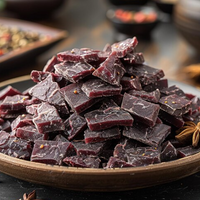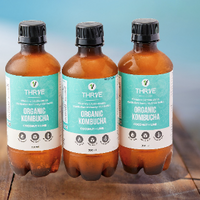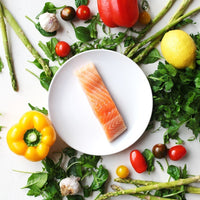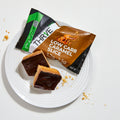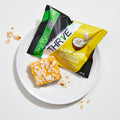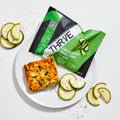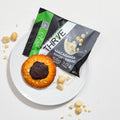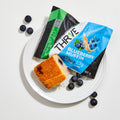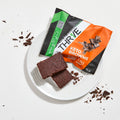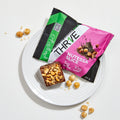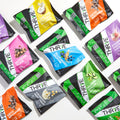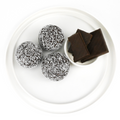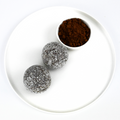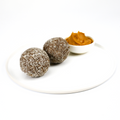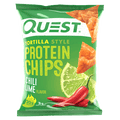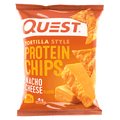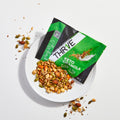In this blog series, THR1VE Founder and CEO Josh Sparks discusses some of the biggest myths around diet and exercise. This week: fruit is all-natural so you can eat it any time.
 So many snacks you see on shelves are packed with added sugars, refined oils, fillers and preservatives. Often, these same snack options are branded as “healthy”, which is incredibly confusing, right? While there are a lot of competing ideas about what good nutrition actually means, what most people can agree on is that eating real, unprocessed foods is a great foundation for a healthy diet. That’s why fruit – the whole and unprocessed kind from nature, not a factory – is pretty awesome.
So many snacks you see on shelves are packed with added sugars, refined oils, fillers and preservatives. Often, these same snack options are branded as “healthy”, which is incredibly confusing, right? While there are a lot of competing ideas about what good nutrition actually means, what most people can agree on is that eating real, unprocessed foods is a great foundation for a healthy diet. That’s why fruit – the whole and unprocessed kind from nature, not a factory – is pretty awesome.
Fruit is packed with phytonutrients – these are the natural chemicals in fruits and veggies that offer up plenty of health benefits. Think: anti-inflammatory properties, antioxidants and the like. Whole fruits are also rich in the dietary fibre that we generally need much more of. This fibre nourishes your gut, keeps you fuller for longer and helps your body process the natural sugars in fruit.
However, that is not to say fruit is the ideal food to eat all day long, especially if your aim is to lose any unwanted kilos.
Vegetables tick all the same nutritional boxes and they are generally much lower in carbohydrates. They offer significantly more nutrient density than fruit and an array of health-promoting compounds not found in any fruit. And just like fruit, the high fibre content of most veggies means you feel fuller for longer, while supporting a healthy gut.
So, if you’re looking to burn fat fast and sustain your success, we always recommend veggies with every meal and fruit in limited quantities. Even then, if losing weight is truly your primary motivator, consider limiting your choices to very low sugar fruits such as dark berries or eliminating fruit altogether until you reach your weight loss goals.
Eating more wholefoods
Wherever you land on eating fruit versus veggies, there are almost endless benefits to be gained from eating more wholefoods in general. In fact, a study released last week from the University of Leeds found that people who eat more fruit and vegetables report a higher level of mental wellbeing and life satisfaction than those who eat less. The study analysed data from more than 40,000 people in the UK over time, building on earlier research from Australia and New Zealand.
Yet despite the known physical and psychological benefits of eating fruit and veggies, figures from the Australian Bureau of Statistics show that only half of Australian adults eat sufficient serves of fruit and a meagre 7% of adults eat enough veggies. This is based on the Australian Institute of Health and Welfare’s guidelines that we eat two serves of fruit a day and between 5-6 serves of veggies, depending on age and sex. We clearly need to up our veggie game!
How about juice?
Despite its wholesome image, fruit juice doesn’t stack up that well nutritionally. For one, juice is stripped of dietary fibre. Fibre reduces the negative impact of the carbs in fruit on blood sugar, while simultaneously making you feel full and supporting gut health. As you know, consuming eight apples in one sitting is less appealing than downing a bottle of apple juice. It is just too easy to over-consume the carbs while not getting the fibre.
Many light and heat sensitive good nutrients are also destroyed in the juicing process, along with valuable nutrients that are found in the skins of fruit. Instead, what you usually get is a nice big hit of water and a type of sugar called fructose.
Fructose is processed by your body very differently from other sugars. Fructose can only be processed by the liver and your liver has a limited capacity. Any extra fructose which is unable to be used by the liver is very efficiently stored as body fat. Not ideal!
Not all juices are created equal, of course. There are some benefits to vegetable-based juices – they are a convenient source of nutrients with less of a sugar spike. However, it’s always worth checking the label. A small 250ml cup of “no added sugar” orange juice offers roughly five teaspoons of sugar. A 250ml cup of a popular brand of cold pressed green juice still contains 3.5 teaspoons. A small whole orange, on the other hand, has just two teaspoons of sugar, with extra fibre to boot.
That’s why you should be wary of dried fruit, too. While it is a good source of fibre and some nutrients, it’s very high in fructose. It’s also a lot easier to eat a big portion of dried fruit than it is whole fruit, which means the sugar and calories can really add up. On top of that, dried fruit often comes coated in even more sugar with a side of extra chemicals. So, if dried fruit is your snack of choice, be careful to check the label and serve up a sensible portion.
Are juice cleanses okay?
Juice cleanses are highly questionable in the eyes of most health professionals. The issue with many juice cleanses is that you can end up having up to 38 teaspoons of natural sugars per day, with no real protein or good fats. To get the same amount of natural sugars from whole fruit, you’d need 16 apples or 18 punnets of strawberries.
Sure, you might lose weight on a juice cleanse – but this weight is usually a mix of muscle, water and maybe a little body fat. This loss of muscle can slow your metabolism once you’ve finished, leading to a quick rebound in weight. Your best-case outcome is likely the dreaded ‘yo-yo’ of old school dieting.
We prefer a more sensible, sustainable and scientifically-validated approach to losing weight, using smart plate design and the right portions. We suggest two thirds of the plate should be non-starchy plant-based foods, adding healthy fats for prep, cooking and dressing, while one third of the plate should be a high-quality source of animal or vegetarian protein. Wholefood sources of carbohydrates, such as starchy veggies, rice or legumes, would be added after training only.
Once you have achieved your goals, we suggest you gradually increase your whole fruit intake, based on your appetite for it, and test your response. We’re by no means advocating for a life without a juicy summer mango or crispy apple. Just remember that all the good stuff in fruit is available in veggies, usually with greater nutrient density and with fewer carbs – enjoy accordingly!
To find out more about our sustainable and scientifically-validated 8-week transformation program, click here!
Photo by Pineapple Supply Co. on Unsplash

